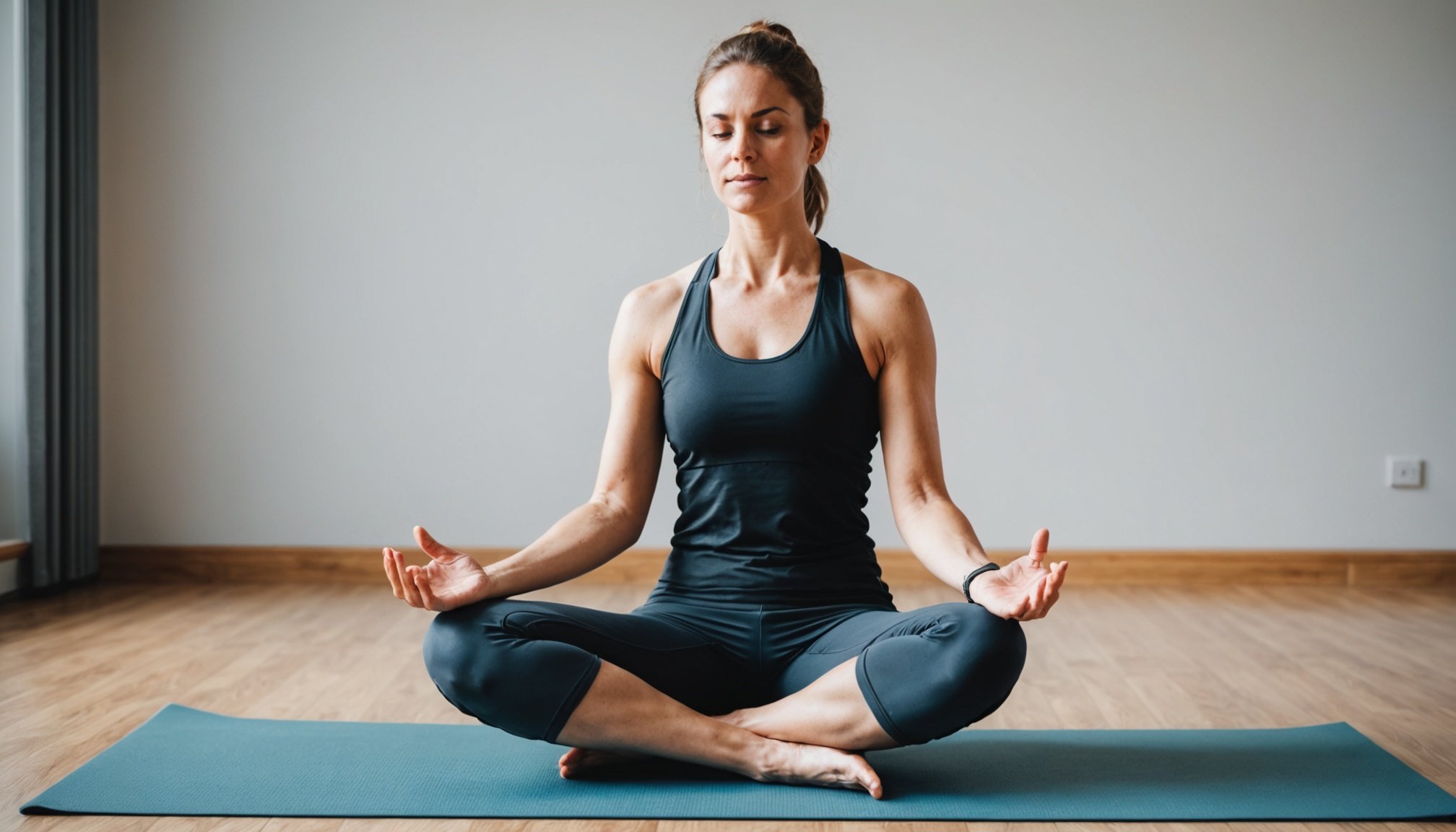Overview of Yoga Practices for Athlete Injury Prevention
Yoga for athletes has become increasingly popular as a method for enhancing injury prevention. Incorporating modern yoga techniques into an athlete’s routine can significantly reduce the risk of injuries.
Yoga provides a holistic approach that helps in improving flexibility, balance, and overall body awareness, which are crucial for athletes aiming to avoid common injuries. By regularly practising yoga, athletes can increase their body strength and ensure better alignment, reducing the strain on various muscle groups. This proactive approach not only aids in preventing acute injuries but also chronic ones, which might develop over time due to repetitive movements or improper form.
Also to see : Revolutionizing Athlete Health: How UK Sports Teams Harness Wearable Tech for Wellness Monitoring
In recent years, there has been a growing trend among professional and amateur athletes to incorporate yoga as part of their training. Modern yoga techniques blend traditional poses with contemporary practices to meet the unique demands of athletes across various sports. These practices often emphasise dynamic stretching and muscle conditioning, tailored specifically to the sport an athlete is engaged in.
The inclusion of yoga in sports therapy has also shown positive outcomes. For athletes recovering from injuries, yoga can serve as a gentle yet effective rehabilitative tool. It allows for gradual improvement without putting excessive strain on healing tissues, ultimately facilitating a faster and safer return to peak performance.
Also to see : Maximizing Athletic Excellence: A UK Sports Team’s Tech-Driven Performance Playbook
Evidence-Based Benefits of Yoga for Athletes
Yoga offers a myriad of benefits tailored to athletes, providing both immediate and long-term advantages in sports therapy. It encompasses evidence-based practices that cater to the holistic needs of those engaged in demanding physical activities. This approach not only includes physical benefits such as enhanced flexibility and strength but also focuses on mental and emotional well-being, thus positioning yoga as a fundamental asset in athletic training.
Physical Benefits
In the realm of physical enhancements, yoga for athletes excels in improving balance, coordination, and muscle strength. Regular practice aids in maintaining a heightened sense of body awareness, which is paramount for preventing common sports injuries. The strength gained through yoga regimes often complements traditional athletic training, providing a comprehensive fitness framework.
Mental Benefits
The emphasis on mental wellness is paramount, as modern yoga techniques reduce anxiety and stress levels. This mental clarity allows athletes to focus better during training and competitions. Furthermore, these practices help in cultivating a calm mind under pressure, an essential skill for peak performance.
Long-Term Health Benefits
Long-term integration of yoga has shown strong evidence in supporting injury recovery and rehabilitation. It ensures athletes can benefit from sustained health improvements, reducing the likelihood of chronic injuries. Thus, the benefits of yoga extend beyond immediate physical gains, offering ongoing health support.
Common Sports Injuries and Yoga Interventions
Athletes commonly face injuries like sprains, strains, and tendonitis, which can hinder their performance. Yoga interventions offer tailored solutions to address these issues. For instance, sprains, often seen in the ankles, can benefit from yoga poses prioritising balance, such as the Tree Pose, which strengthens stabilising muscles.
Yoga for athletes offers poses like the Warrior series and Downward-Facing Dog to counteract muscle strains, enhancing flexibility and promoting healing in key areas such as the hamstrings and shoulders. Similarly, tendonitis, prevalent in sports involving repetitive motions, finds relief through gentle stretches that improve mobility and reduce inflammation. Poses like the Extended Triangle Pose help in elongating and relaxing affected muscle groups, mitigating discomfort.
Injury-specific practices are bolstered by case studies that highlight successful outcomes through dedicated practice. Athletes have reported significant improvements in recovery times and reduced pain levels, illustrating the practical efficacy of incorporating yoga. These interventions not only target immediate symptoms but also contribute to a proactive injury prevention strategy by promoting body awareness and endurance. Such evidence underscores yoga’s valuable role in sports therapy, ensuring athletes can remain competitive while minimising injury risks.
Integrating Yoga into Sports Therapy Programs
Integrating yoga into sports therapy programs can significantly enhance an athlete’s physical and mental development. This integration provides a structured method for incorporating yoga for athletes, accommodating both preventive and rehabilitative needs. Creating a seamless framework allows modern yoga techniques to blend with existing training regimens, thus enriching the athlete’s performance and wellness without overwhelming their schedule.
Framework for Integration
Crafting a robust framework requires tailoring practices to each sport’s demands and athlete’s specific needs. This begins with identifying key areas—such as flexibility, balance, and injury prevention—where yoga can offer tangible benefits. Collaborating with sports therapists ensures the yoga routine aligns with overall training objectives, maximising efficacy.
Practical Tips for Therapists
Therapists should leverage yoga’s adaptability, implementing modifications that cater to varied skill levels and body types. Introducing progressive practices helps athletes to gradually enhance capabilities without risking overexertion. Encouraging athletes to communicate feedback fosters a supportive atmosphere conducive to growth.
Monitoring Athlete Progress
Using tools such as performance metrics and wellness scales, therapists can monitor athlete progress effectively. This tracking not only provides insights into the benefits of yoga but also assists in adjusting practices to maintain optimal results. Regular assessments solidify yoga’s role in achieving sustainable health improvements.
Expert Insights and Testimonials
The influence of yoga in sports therapy continues to grow, and insights from leading experts provide a deeper understanding of its impact. In the UK, prominent sports therapists have increasingly advocated for the integration of modern yoga techniques in training regimes. Their observations highlight how yoga addresses both physical and psychological demands faced by athletes, resulting in enhanced performance and resilience against injuries.
Testimonials from athletes further underline yoga’s pivotal role in their routines. Many report improvements in flexibility and mental clarity, leading to fewer injuries and better overall recovery times. Such feedback not only validates expert opinions but also encourages wider acceptance of yoga in athletic circles.
Looking ahead, future directions in yoga and sports therapy point towards personalised practices. By considering individual athlete needs, sports therapists can craft bespoke yoga experiences that cater to specific goals and challenges. This personalised approach, combined with innovations in technology, promises to refine yoga’s benefits even further.
With ongoing dialogue between experts and athletes, the role of yoga in sports therapy is poised for continued evolution, offering tailored solutions and supportive strategies for athletes at all levels.
Common Sports Injuries and Yoga Interventions
When it comes to common injuries in sports therapy, conditions like sprains, strains, and tendonitis are often at the forefront. These injuries can be particularly burdensome for athletes due to their impact on performance and the recovery time involved. Yoga interventions can provide significant relief and rehabilitation benefits tailored to these specific issues.
Athletes with ankle sprains might find yoga poses prioritising balance, such as the Tree Pose, beneficial. This helps in strengthening the stabilising muscles, thereby improving overall ankle stability. For those suffering from muscle strains, particularly in areas like the hamstrings and shoulders, the Warrior series and Downward-Facing Dog are advantageous. These poses are geared towards enhancing flexibility and promoting healing.
Tendonitis, which is common in sports involving repetitive motions, may see improvement through gentle stretches that increase mobility and reduce inflammation. Injury-specific practices, supported by detailed case studies, show that dedicated yoga routines have led to significant improvements in recovery times and pain reduction for athletes.
By focusing on body awareness and endurance, these interventions effectively incorporate a proactive strategy for injury prevention, allowing athletes to maintain competitive levels while minimising injury risks.






